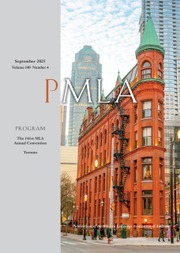No CrossRef data available.
Article contents
A Study of the Metrical Structure of the Middle English Poem The Pearl
Published online by Cambridge University Press: 02 December 2020
Extract
The difference in the treatment of final unstressed -e among the various ME. dialects has long since been noticed. In Nth., according to Morsbach (Mittelenglische Grammatik §§ 6–9), it became silent (“ist stumm”) about 1350; in Ml. it was in part sounded throughout the fourteenth century, though as Morsbach remarks, “in vielen fällen ist es schon verstummt;” in WSth. and MSth. it was in general retained throughout the century; while Kt. on the whole retains it intact quite up to the middle of the century.
- Type
- Research Article
- Information
- Copyright
- Copyright © Modern Language Association of America, 1897
Footnotes
For the suggestion which led me to write this paper, and for valuable assistance in its preparation, I am indebted to Professor O. F. Emerson, of Western Reserve University.
References
page 327 note 1 The general structure of the poem has already been described: see Trautmann, Angl. i 119; Kaluza, ESt. xvi 178; Gollancz, Pearl p. xxiii f.
page 327 note 2 In the use of signs I have in general followed Kittredge: -e (in italicized words -e) indicates a final e written but elided before a vowel or h. -ë (or -ë) indicates a final e pronounced before a vowel or h. Used over a vowel in the interior of a word the diæresis indicates that the vowel is pronounced. -[ë] indicates that the metre requires an e to be pronounced at the end of a word which is written without -e in the MS. -ė indicates a final -e written but not sounded before a consonant (not h). -ė- indicates syncopated e (and so of other vowels).
page 327 note 3 I have followed Morris in using the character for (a) z (sonant spirant), (b) h (guttural and palatal spirant), and (c) y (consonant).
page 329 note 1 None of the words cited occur at the end of the line; cp. Summary 14.
page 329 note 2 We might also read: myn herte a brunt, 174.
page 335 note 1 If we adopt Gollancz's reading, At date of the day, the -e will be removed; but cp. daye, 517, 541.


